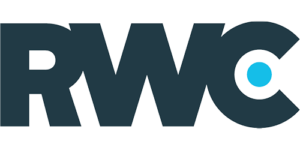How to Track Your Phone Calls: 5 Solutions for Your Business
If you generate sales through your business website, you’ll be keen to track your conversions and find out where your customers are coming from.
But while this is easy when it comes to online conversions like direct sales and lead-capture forms, what happens if you get a significant amount of new business over the phone?
Business owners often have difficulty working out how well they are converting over the phone because the tracking options are more limited. Which calls are leading to new business? Which adverts are generating calls in the first place?
However, tracking phone calls is becoming easier. You now have a number of options for tracking calls that come via advertisements or your website so you can optimise your conversion process and generate more leads and sales.
Here are some of the options available to you.
Solution 1: Ask Your Customers
The least technical way to find out how people found your business when they call is to ask them.
Once you are in a conversation with a prospect, ask them how they found your number. You may find that they saw your number in an offline ad or that they found it at the end of a blog post or on social media.
You can then have a system in place to keep a record of the data to give you a general idea over time of how people are finding your business.
However, while this can actually work quite well for small businesses with a low call volume, it’s often not practical when you receive a large number of calls. A more robust solution is needed.
Solution 2: Track Calls from Online Ads
One of the best ways to track your calls is via your online ads. If you have ever used Google AdWords, you will know how it works: your ads show up in search, people click on them, and you pay a fee.
You can get all sorts of data on the most effective ads, allowing you to optimise your campaigns and generate more conversions.
But what if you want people to call you instead of click on your ad? That’s where Google’s Call Extensions come in.
Call Extensions work on the same principle as standard ads. But instead of paying when someone clicks on your ad, you pay when they call you. They can either call the number that they see in your ad, or they can click directly on your number if they are using their phone, and this allows them to instantly make a call.
(Bing has a similar option for call extensions that you might want to try out.)
This can be great if you want to receive calls rather than clicks. Perhaps you convert better over the phone compared to people visiting your website.
It’s easy to set up by adding a Google forwarding number to your ad. The data is then collected in your AdWords account so you can find out how your ads are performing, which ads are generating the most calls and which are generating the most conversions from those calls.
You can then get smarter. For example, you might not consider every call a conversion. Instead, you might want to set a call that lasts over two minutes as a conversion. So determine what qualifies as a conversion for your business.
Adding phone numbers to your ads might even increase your overall click-through rates, so it’s definitely worth experimenting with. You can even set your business hours so you don’t waste money on calls that don’t get through.
You can find out all about Call Extensions here. Start experimenting with them and find out if you can boost your conversions this way.
Of course, the limitation with Call Extensions is that they only work in your adverts. So Google has come up with another option.
Solution 3: Website Call Conversions
What happens if someone clicks on your ad, visits your website, and then calls you. How can you collect data on this that you can track and optimise?
Website Call Conversions (which you can read about here) provide you with a solution.
Introduced by Google in 2014, these work differently to Call Extensions. Whereas with Call Extensions your prospects call your number directly from the ad, Website Call Conversions work after the prospect visits your landing page.
The process is that the prospect clicks on a standard AdWords ad, visits your website and then calls you from the landing page. But instead of being a normal number, this is a forwarding number that you have inserted on the landing page.
This then measures the calls made by customers who visit the page after clicking on an ad. You can therefore attribute the call back to the ad and the keyword and gather data on which ads lead to the most calls to your business.
One of the great things about this is that it is a completely free service, so you can use it in any of your existing AdWords campaigns. However, once again, it only works for PPC traffic.
So what options exist for tracking calls outside of advertising?
Solution 4: Click-to-Call Counters
What if you don’t advertise but you just want more data on your calls? Click-to-call counters are a great option.
Many people are now visiting websites on their mobile phones, and a click-to-call feature allows them to click on your number and call your business directly, making it quicker and easier for them.
One of the benefits of these is that you can easily track them. When people click the button, they are taken to a landing page that tracks the visits, helping you to gather data about where you are getting calls from.
It might not always be accurate because some calls are not completed, but it’s a good start and a basic solution.
Solution 5: Specialist Call-Tracking Software
A more advanced solution is to make use of call tracking software. This is more expensive, but it is also much more accurate, and it is a good option for businesses receiving a large number of calls every month.
Specialist call tracking platforms are different to other methods of call tracking. They are more in-depth, and they can help you to work out the complete story about your conversions so you can track the whole customer journey and discover all the touchpoints that lead up to the call – rather than just one source like an ad.
So you can find out the exact point that your customers decide to convert and what led them there.
These can also often integrate with other platforms like Google Analytics to help you get a larger picture of your campaigns, which you can use to improve your CRO.
You can track calls from paid sources, organic, and even offline to provide more in-depth reporting.
They usually provide dynamic numbers, where you get a selection of different numbers for each marketing campaign. You can then insert these numbers to gather information on the source of the call, the keyword that is leading to the calls, as well as data such as the time of day the call was made.
Track Your Calls to Optimise Your Campaigns
If you get a lot of leads over the phone, you will need some way to track your calls if you want to find out how to improve your conversions. It is the only way to optimise your campaigns, otherwise you are leaving sales on the table.
Call tracking software is often the best option. However, you might want to start by experimenting with AdWords to find out how many of your ads turn into calls and conversions.
It might be that a marketing campaign underperforms when it comes to online conversions but does very well with calls.
So start looking into options for tracking your calls, and increase the amount of business you generate over the phone.
As digital marketing consultants, we provide clients with a wide range of complimentary digital marketing service and solutions, from conversion rate optimisation (to increase sales and enquiries from client websites) to PPC management and from SEO marketing to social media marketing – talk to us to find out how we help organisations like yours improve site traffic and, most importantly, revenue!







